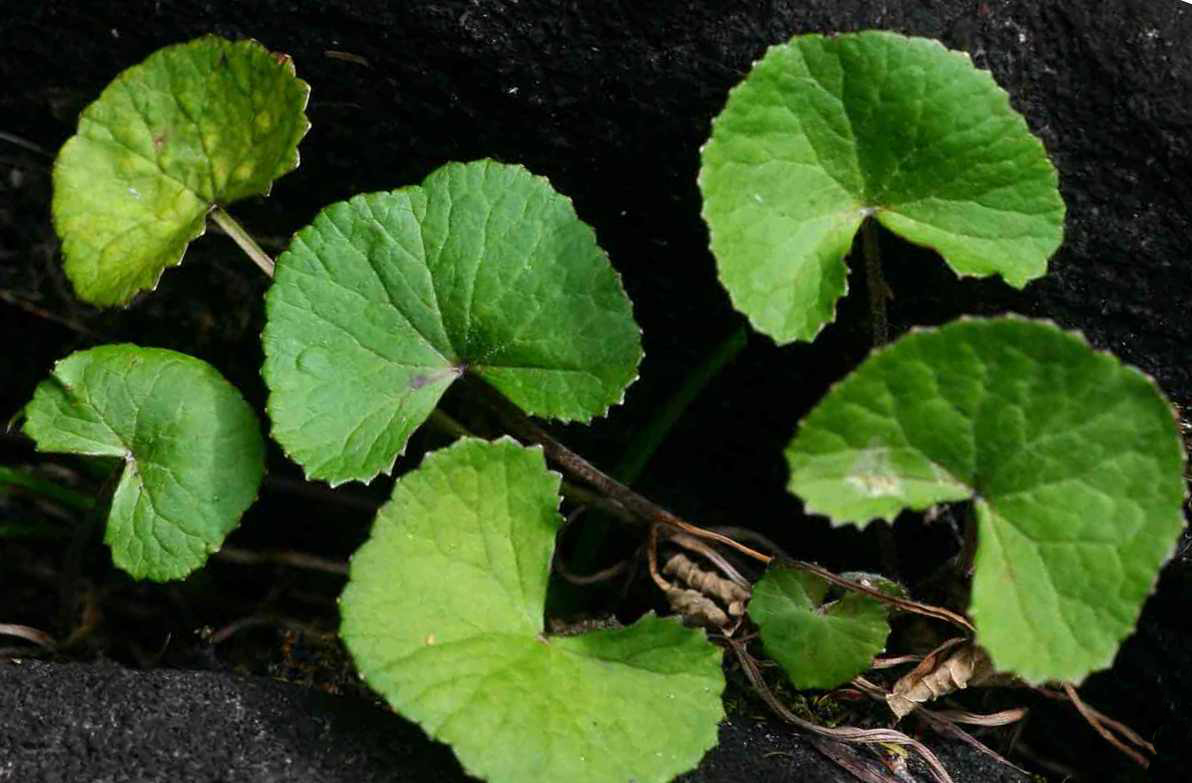
Asiatic Pennywort
A Native Herb of Immense Medicinal Value
-Dr. Arvind Singh
Asiatic pennywort is a creeping annual herb with soft tender leaves. The roots and leaves develop from the nodes. The leaves of Asiatic pennywort are reniform (kidney-shaped) having a size between 1.25 – 6.25 cm with long petioles. The arrangement of leaves on the stem is alternate. The botanical name of Asiatic pennywort is Centella asiatica.
It belongs to the Apiaceae family of flowering plants. The Sanskrit name of the plant is Mandukaparni. The plant has also been described in Ancient Indian medical treatise Atharvaveda with the name Manduki (the plant owes this name due to frog-like the appearance of leaves). In Bengali, it is known as Thankuni.
Asiatic pennywort is a very popular herb in India for longevity and mental function. It is used to decrease fatigue and depression. It energizes the central nervous system. The plant is also useful in repairing skin and connective tissues.
Mandukaparni and Brahmi are botanically two different plant species
There has always been a state of confusion between Mandukaparni (Asiatic pennywort) and Brahmi (Botanically known as Bacopa monnieri) as several ancient Indian medical treatises consider both as the same plant. However, it is not true. Mandukaparni and Brahmi though have similar habit, habitat requirement and medicinal attributes are two different plant species. Both are creeping herbs which prefer to grow in moist and shady habitat but the Mandukaparni has non-fleshy leaves while Brahmi has fleshy leaves. Mandukaparni is known as Asiatic pennywort which belongs to Apiaceae family while Brahmi is known as Indian pennywort which belongs to Plantaginaceae family. As a brain tonic Brahmi is more effective than Mandukaparni.
Distribution and Ecology:
Asiatic pennywort is distributed throughout India up to an altitude of 600 m from base of Himalaya to Sri Lanka and Malaysia and in all tropical and sub-tropical regions of the world.
Asiatic pennywort generally prefers to grow in shade with adequate soil moisture. The plant appears in the winter season. Flowering occurs in the spring season. The white coloured flowers are assembled together to form the umbel inflorescence which is the characteristic feature of the Apiaceae family.
Pharmacology:
Bacoside A and Bacoside B are the chief ingredients of Asiatic pennywort. Bacoside A helps in release of nitric acid that allows the relaxation of the aorta and veins, to allow the blood to flow more freely through the body. Thus Asiatic pennywort strengthens the immune system, improves vitality and performance and promotes longevity.
Bacoside B is a protein known for nourishing brain cells. Hence Asiatic pennywort improves mental clarity, confidence, intelligence, and memory.
Asiaticoside is another ingredient of Asiatic pennywort which stimulates the reticuloendothelial system where new blood cells are formed and old ones destroyed, fatty materials are stored, iron is metabolized. Asiaticoside also stimulates the synthesis of lipids and protein necessary for healthy skin.
Pennywort Medicinal uses:
Asiatic pennywort is used in the Indian system of disease treatment as a diuretic, nerve tonic, alterative, local stimulant, memory enhancer, and blood purifier. The plant is valued medicinally as a beneficial remedy in certain forms of leprosy. It is used in the treatment of chronic rheumatism, madness, cholera, amenorrhoea, piles, anaemia and tuberculosis. Fresh juice derived from 2-4 leaves given with sugar provides relief against dysentery. Furthermore, the rubbing of juice beneath the naval is also helpful in the cure of dysentery.
In the Indian system of medicine, the leaf juice mixed with milk is given as an alterative in fevers, jaundice, and gonorrhea. An ointment made of leaf juice and lanoline is used against elephantiasis (filaria). Leaf powder of Asiatic pennywort is given with milk for memory improvement and also against mental debility. Consumption of 2-4 leaves daily corrects stammering disorder in children. Oil prepared with fruits of Aonla (Phyllanthus emblica) is used as a hair tonic.
Conclusion:
It can be concluded that Asiatic pennywort is an indigenous plant of immense medicinal importance. It is extremely useful in the treatment of skin diseases, mental debility, and nervous disorders. Moreover, Asiatic pennywort is also useful in the cure of rheumatism, dysentery, jaundice, gonorrhea, cholera, piles, anemia, tuberculosis and elephantiasis.
-X-X-X-X-X-
 Dr. Arvind Singh is M. Sc. and Ph. D. in Botany with an area of specialization in Ecology. He is a dedicated Researcher having more than four dozen published Research Papers in the Journals of National and International repute. His main area of Research is Restoration of Mined Lands. However, he has also conducted Research on the Vascular Flora of Banaras Hindu University-Main Campus, India.
Dr. Arvind Singh is M. Sc. and Ph. D. in Botany with an area of specialization in Ecology. He is a dedicated Researcher having more than four dozen published Research Papers in the Journals of National and International repute. His main area of Research is Restoration of Mined Lands. However, he has also conducted Research on the Vascular Flora of Banaras Hindu University-Main Campus, India.
keywords: asiatic pennywort tea, asiatic pennywort, asiatic pennywort herb, asiatic pennywort health benefits, herbal balm, asiatic pennywort seeds, asiatic pennywort benefits, asiatic pennywort gotu kola, asiatic pennywort herb extract, asiatic pennywort for sale, indian pennywort, water pennywort, pennywort buy, asian pennywort plant benefits, mandukaparni herb, mandukaparni herb benefits, ayurvedic herbs mandukaparni, brahmi benefits
